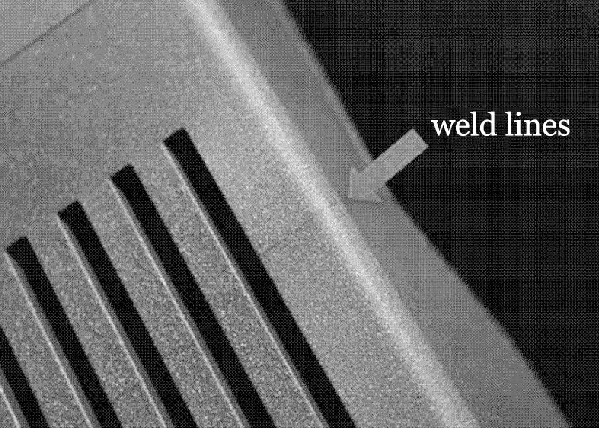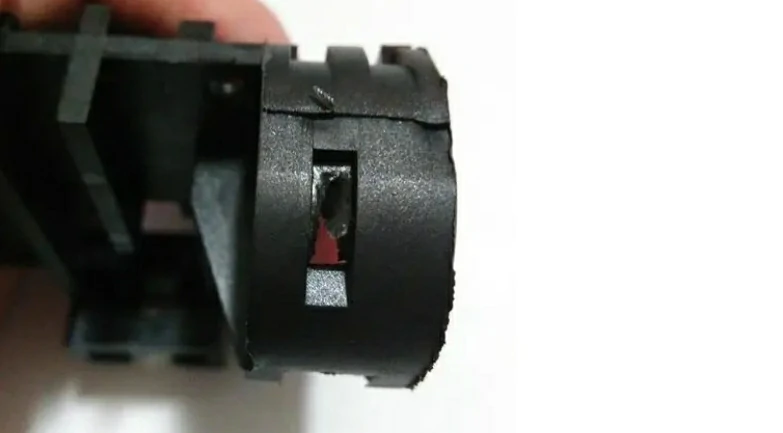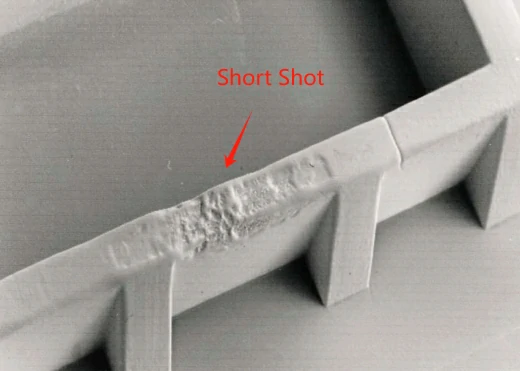High precision injection molding has revolutionized the manufacturing of complex parts, enabling the production of intricate designs with unmatched accuracy. This advanced technique is essential in industries such as automotive, medical, electronics, and aerospace, where exacting standards and tolerances are critical. The ability to produce parts with high precision not only improves product quality but also enhances performance and reliability.

What is High-Precision Injection Molding?
High-precision injection molding, in brief, refers to the process of producing plastic products with extremely high dimensional accuracy and stable quality using advanced injection molding technology. The concept of “high-precision injection molding,” compared to traditional “conventional injection molding,” is significant as it meets the modern industry’s urgent demand for high-accuracy plastic components.
The definition of precision injection products primarily focuses on two core indicators: dimensional repeatability, meaning the consistency of dimensions across multiple production cycles, and quality repeatability, referring to the stability and reliability of product quality. However, due to the inherent properties of different materials and variations in processing technologies, one cannot simply equate the precision of plastic parts with that of metal injection molding parts.
So, how precise can high-precision injection molding achieve?
Specifically, high-precision injection molding typically requires dimensional accuracy within 0.01 to 0.001 mm. This demands injection machines to possess high injection pressure, injection speed, and precise mold closing systems. The mold closing system must exhibit sufficient rigidity and mold locking accuracy to ensure dimensional stability and repeatability of the products. During the production process, precise control of parameters such as pressure, flow rate, temperature, and metering is essential to ensure reproducible conditions of the molding process and dimensional repeatability of the products.
Material Selection
Key principles for material selection include high mechanical strength, good dimensional stability, excellent creep resistance, and broad environmental adaptability.
Several materials are highly favored in high precision injection molding due to their unique properties. For instance, POM and its reinforced variants (such as carbon fiber reinforced CF or glass reinforced GF) offer excellent creep resistance and fatigue resistance, as well as superior weatherability and dielectric properties. Additionally, these materials are easy to demold when lubricants are added, enhancing production efficiency.
PA and its glass fiber reinforced PA66 are also commonly used in high precision injection molding. PA is known for its strong impact resistance and wear performance, with good flow properties that allow for the easy molding of products with a wall thickness of 0.4mm. Glass fiber reinforced PA66 further improves heat resistance (with a melting point of up to 250°C). However, it should be noted that this material is hygroscopic, and typically requires moisture conditioning after molding.
PBT reinforced polyester is favored for its short molding cycle time. Compared to other commonly used materials, PBT has a shorter molding time, which helps to improve production efficiency. The molding time comparison is as follows: PBT ≤ POM ≈ PA66 ≤ PA6.
PC and its reinforced GFPC variants are widely recognized for their excellent wear resistance and rigidity. Reinforced GFPC not only significantly enhances rigidity but also offers good dimensional stability, strong weatherability, flame resistance, and favorable molding process characteristics. These features make PC and GFPC materials broadly applicable in the field of high precision injection molding.
Advanced Techniques
High precision injection molding involves the utilization of advanced technologies and techniques to achieve tight tolerances and superior part quality. Key techniques include:
- Advanced Molding Machines: Utilizing state-of-the-art injection molding machines equipped with high-resolution controls and precise mechanisms ensures consistency and accuracy in part production.
- Precision Tooling: High precision molds and tools, often fabricated using CNC machining, EDM (Electrical Discharge Machining), and advanced tool steels, are critical for achieving tight tolerances and minimizing part defects.
- Scientific Molding Processes: Implementing scientific molding principles involves rigorous process optimization through data-driven analysis of parameters such as temperature, pressure, and cooling rates, ensuring optimal part quality and repeatability.
- In-Mold Sensors and Monitoring: Integration of sensors within molds allows real-time monitoring of key process parameters, facilitating immediate adjustments to ensure quality and consistency during production.
- Micro Molding: For ultra-precision applications, micro molding techniques are employed, utilizing specialized equipment and processes to manufacture parts with micron-level accuracy.
The Importance of High-Precision Injection Molds
The design of the injection mold is directly related to the precision and quality of the product. It must be meticulously crafted to ensure that every detail meets the requirements. To guarantee high precision of the products, the dimensional tolerances of the mold must be strictly controlled, typically maintained within one-third of the product’s dimensional tolerance.
When designing the mold structure, it is crucial to balance the number of cavities with the rigidity and stability of the mold. Too many cavities can compromise the mold’s rigidity. Therefore, appropriately reducing the number of cavities and increasing the thickness of the base plate, support plate, and cavity walls can effectively prevent severe elastic deformation of the mold under high temperature and high-pressure working conditions.
To facilitate demolding, the mold design should minimize the number of cavities, shorten the runner length, and improve the surface finish of the mold. This not only aids in the smooth demolding of the product but also reduces the potential damage to the product during the demolding process.
High mechanical strength alloy steel should be selected as the mold material. Additionally, the materials used for manufacturing cavities and runners should undergo strict heat treatment to enhance their hardness and wear resistance. Typically, the hardness of the forming parts should reach around HRC52 to ensure the durability of the mold and the precision of the products. Furthermore, the material should have good corrosion resistance to withstand various chemical environments encountered during the injection molding process.
Characteristics of High-Precision Injection Molding
High-precision plastic injection molding introduces unique features and solutions for plastic product manufacturers due to its complexity. This process requires the use of polymer optical elements, which are precisely shaped using CNC machining and high-pressure equipment to enhance the quality and accuracy of plastic parts, ensuring continuous production of high-quality products. The entire process is fully automated with computer-controlled systems, allowing manufacturers to customize the molding process according to specific product requirements, thus reducing labor costs and increasing production efficiency. Compared to traditional plastic injection molding, high-precision molding technology can produce more accurate plastic parts, suitable for industries such as medical, IT, pharmaceutical, and automotive, which require strict tolerances. To ensure low shrinkage of the products, this process demands materials with a low shrinkage rate, typically between +/-0.01 inches to +/-0.02 inches, which can be achieved by adding glass fibers and other resins to improve material performance.
The molds used in high-precision plastic injection molding are crucial tools to ensure high-precision manufacturing and must meet stringent engineering design requirements. Successful mold manufacturing involves thorough investigation, design, and testing processes. When designing molds, several factors must be considered, including the size, location, and number of mold cavities, the precision of the parting surfaces, the mold materials (such as steel alloys or cast iron), the thickness of the base plates, and the dimensions of runners and gates. Manufacturing high-precision plastic parts requires highly accurate models, and each molded part must be completely consistent. This slow and steady manufacturing method avoids reliance on rapid tooling, ensuring the production of high-precision products.
Benefits of High Precision Injection Molding
High-precision injection molding offers several significant benefits that make it indispensable in various industries:
- Accuracy and Consistency: High-precision molds and advanced machinery ensure consistent and accurate replication of intricate designs and tight tolerances. This reliability is crucial in industries such as aerospace, medical devices, and automotive, where precision is non-negotiable.
- Complex Geometries: It allows for the production of parts with intricate and complex geometries that would be difficult or impossible to achieve with traditional manufacturing methods. This capability opens doors for innovative product designs and functionalities.
- Reduced Material Waste: The precise control over the injection process minimizes material waste. This efficiency not only reduces injection molding costs but also aligns with sustainability goals by conserving resources.
- Enhanced Material Properties: Injection molding allows for the use of a wide range of materials, including reinforced plastics and exotic materials, to enhance mechanical properties such as strength, durability, and heat resistance. This flexibility ensures that parts can be tailored to meet specific performance requirements.
- Cost Efficiency: While initial setup costs can be higher compared to conventional molding methods, high-precision injection molding offers economies of scale. It enables the production of large quantities of parts with consistent quality, reducing overall production costs over time.
- Fast Production Cycles: Once molds are set up, injection molding processes are typically fast, allowing for high-volume production within short time frames. This rapid production capability is advantageous in meeting market demand and responding to urgent needs.
- Quality Assurance: Rigorous quality control measures, including advanced inspection techniques like CMM (Coordinate Measuring Machine) and statistical process control (SPC), ensure that parts meet stringent quality standards. This reliability is crucial in applications where safety and performance are paramount.
- Versatility: High-precision injection molding is versatile and can be used to produce a wide range of parts across different industries. From tiny components in electronics to large automotive parts, the process adapts to diverse manufacturing needs effectively.
- Design Flexibility: Injection molding allows for flexibility in design changes without significant cost implications. This agility in design iteration is beneficial during product development phases, where adjustments may be necessary based on testing and feedback.
In summary, high-precision injection molding not only enhances manufacturing efficiency and product quality but also enables innovation and competitiveness in the global market. Its ability to meet stringent tolerances, produce complex geometries, and optimize material usage makes it a preferred choice for industries requiring high-performance components.
Application
High-precision injection molding plays a pivotal role across diverse industries, where exacting standards of quality, durability, and performance are paramount.
| Application Area | Specific Applications | Key Requirements | Typical Materials |
|---|---|---|---|
| Medical Devices | Syringes, medical tubing, surgical instrument parts | High precision, sterility, chemical resistance | Polycarbonate (PC), Polypropylene (PP) |
| Automotive | Precision gears, connector housings, sensor housings | High precision, heat resistance, wear resistance | Polyamide (PA), Polyoxymethylene (POM) |
| Consumer Electronics | Smartphone cases, connectors, micro switches | High precision, thin walls, high surface quality | Polycarbonate (PC), Liquid Crystal Polymers (LCP) |
| Aerospace | Instrument components, connectors, fasteners | High precision, high strength, lightweight | Polyetheretherketone (PEEK), Polyimide (PI) |
| Optical Devices | Lenses, fiber optic connectors, laser components | High precision, high transparency, low stress | Polymethyl methacrylate (PMMA), Polycarbonate (PC) |
| Industrial Machinery | Precision bearings, seals, gears | High precision, wear resistance, long life | Polytetrafluoroethylene (PTFE), Polyoxymethylene (POM) |
| Home Appliances | Precision switches, sensor housings, display frames | High precision, durability, high aesthetic quality | Polycarbonate (PC), Polyphenylene ether (PPE) |
Factors Influencing Shrinkage in High-Precision Injection Molding
In high-precision injection molding, the phenomenon of shrinkage is inevitable and must be carefully managed to ensure accurate and high-quality final products. Shrinkage occurs due to several factors, each influencing the extent and manner of shrinkage:
- Thermal Shrinkage: This is caused by the inherent thermal properties of the molding material and the mold material. When the mold temperature is high, the product temperature also increases, leading to increased actual shrinkage rates. Therefore, in high-precision injection molding, it is crucial not to set the mold temperature too high to control the shrinkage rate effectively.
- Crystallization Shrinkage: Crystalline resins undergo shrinkage during orientation processes. As polymer chains crystallize, the volume decreases, resulting in shrinkage of the product. Higher mold temperatures increase crystallinity, thereby increasing shrinkage rates. However, increased crystallinity also enhances product density and reduces the coefficient of linear expansion, which can mitigate shrinkage to some extent. Thus, crystallization shrinkage is influenced by a combination of these factors.
- Orientation Shrinkage: This occurs due to the forced stretching of polymer chains in the flow direction during the injection molding process. As the high molecular chains align in the flow direction, they tend to shrink in the orientation direction as they cool and attempt to return to their coiled state. The degree of molecular orientation is influenced by factors such as injection pressure, injection speed, resin temperature, and mold temperature, with injection speed having the most significant impact.
- Compression Shrinkage and Elastic Rebound: Plastics exhibit significant compression changes under high pressure, characterized by reduced volume, increased density, and reduced coefficient of expansion, thereby reducing shrinkage rates. Additionally, plastics have an inherent property of elastic rebound, partially recovering their original shape after molding, further reducing product shrinkage.
These factors influencing shrinkage in molded products are closely related to molding conditions and operational parameters. Therefore, in high-precision injection molding, it is essential to comprehensively consider these factors and adjust molding conditions and operational parameters to control the shrinkage rate effectively. This control ensures that the molded products meet precise dimensional requirements, maintaining accuracy and quality throughout production.
Future Trends
The future of high precision injection molding is poised for advancements in materials, automation, and sustainability. Emerging trends include:
- Advanced Materials: Utilization of new polymers and composites tailored for specific performance characteristics.
- Industry 4.0 Integration: Increased automation, IoT (Internet of Things), and AI (Artificial Intelligence) for smart, connected manufacturing processes.
- Green Manufacturing: Adoption of sustainable practices such as bio-based materials and energy-efficient molding technologies to reduce environmental impact.
Conclusion
High precision injection molding is a critical manufacturing process that meets the demands for complex, high-accuracy parts across various industries. Through the use of advanced technologies, meticulous process control, and rigorous quality assurance, this technique achieves unparalleled precision.
Partner with BOYI for precision that exceeds expectations. Elevate your products with our high precision injection molding expertise. Contact us today to explore how BOYI can bring your vision to life with unmatched precision and reliability.
Let’s Start A New Project Today
FAQ
Precision is achieved through advanced molding machines, precise tooling (molds), scientific molding processes optimizing parameters like temperature and pressure, in-mold sensors for real-time monitoring, and specialized techniques like micro molding.
It achieves tight tolerances through the use of advanced molding machines with precise controls, high-quality molds fabricated using CNC machining and EDM, and scientific molding techniques optimizing process parameters.
Catalog: Injection Molding Guide

This article was written by engineers from the BOYI team. Fuquan Chen is a professional engineer and technical expert with 20 years of experience in rapid prototyping, mold manufacturing, and plastic injection molding.




